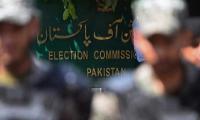After other European nations, Denmark has geared up to restrict all types of veils worn by Muslim women around the world. The move to ban full and partial veils has divided opinion amongst European secularist and religious freedom between those arguing its cultural validity and those seeing it as a sign of oppression against women.
The surge of violence against veiled Muslim women has jeopardised their existence, because for many years – especially since 9/11 – the Western media and disseminated literature have consistently depicted veiled women as the predominant reflection of Islam. Thus, even women with head scarves and other Muslim-style coverings, are easy targets of hostility. Nevertheless, the most trolled write-ups in the Western press are those that signify the veil with the Muslim woman’s identity – by highlighting the fact that Afghan women didn’t cast off their burkas when the militant Taliban were defeated.
The West’s obsession with Muslim women’s clothes and coverings is not contemporary, however, since they tend to perceive Muslims simplistically. The news headlines have curtailed the Muslim woman’s recognition to a piece of clothing – ‘the veil’. One barely finds a column, novel or film about the status of women in Islam without having a veil in the title.
Surprisingly, the word ‘veil’ lacks a universal meaning. It has been moulded to cultural norms. At times, it refers to a face-covering with eyes showing (niqab); at times it refers to a face veil with the eyes covered by a transparent veil (burqa); and at times it signifies just the head scarf (hijab). Other types of veil include encompassing attires like the ankle-length abaya in the Gulf States, the chador in Iran or the regional burkas in Afghanistan and Pakistan.
According to Quranic verses, both genders are to observe modesty in their garments, gaze, gait, and concealing certain body parts. Only the wives of the Prophet (pbuh) were advised to have discourse behind veils and to draw cloaks when leaving home in order to distinct themselves. During the Prophet Muhammad’s (pbuh) life, no other Muslim women used the veil and the term for taking the veil, ‘Darabat al-hijab’, was manifested with becoming the Prophet’s (pbuh) wife.
Muslim clerics agree that the reservation to veil was for the Prophet Muhammad’s (pbuh) wives because he managed his religio- political affairs in the mosque adjacent to his residence, where people visited to discuss their issues, thus leaving no privacy for the Prophet’s (pbuh) wives. Therefore, the veil helped maintain the sanctity to distance themselves with the swarming people at their doorstep. No doubt, some Muslim women have begun to veil themselves to imitate Prophet Muhammad’s (pbuh) wives.
Like the contrast found within our regional clothing, women are diverse too. Conventional presumptions about Muslim women are as imprecise as assuming that all American women are personified by being partly clothed. If anyone has the opportunity to spend time interacting with Muslims, they may know that Muslim women are dynamic and active in society. For instance, in Qatar, women contribute to the highest proportion of grad-school students. Iran’s parliament has more women members than the US Senate. Around the globe, a high proportion of Muslim women is literate and professionally trained; partaking in public discussions and often catalysing reforms. Simultaneously, there is no denying the fact that in several Western and Muslim countries, what women wear has been used as a tool to sway women power.
What some in the West don’t understand is that forced uncovering is also a symbol of tyranny. During the reign of the Shah of Iran in the late 1930s, he issued a decree banning all of types of veils. To demonstrate their opposition to the Shah’s repressive rule, Iranian women gathered to support the 1979 Islamic Revolution by marching in the streets clothed in chadors. [However, the women did not expect to adopt this ‘dress code’ forever – as was prescribed by the revolutionaries who then took power in the new government].
Many Muslim men and women are repressed by despotic regimes. Their life is worsened by alarming poverty and illiteracy. As a sense of responsibility, helping Muslim women defeat their misery is the greatest achievement. To help Afghan Muslims is a tough task for the international community that is dedicated to making this complex society feasible for everyone. Some argue that religion is the root cause of the problems faced by women in Afghanistan. But what is really at fault is all those misguided people who, under the shadow of so-called clergies, are deliberately misinterpreting Islam so as to serve a rigid patriarchal system.
Muslim clerics and state heads should emphasise the essence of Islamic jurisprudence, which encourages women’s right to education, healthcare, marital life, equal remuneration for equal work and engagement in public life. This could help fill the vacuum that has been created and can also help respond to the perceived notion that Islam undermines the rights of women.
Provided the opportunity, Muslim women – like women belonging to other parts of the world – will become literate, pursue their vocations, help move their families forward and make positive contributions, according to their abilities, to society. It’s irrelevant how they dress; what is important is to reduce some of the stereotypes and criticism that are faced by Muslim women, to enable them to enjoy freedom – especially the liberty to make choices that warrant them to be independent agents and adopt a pragmatic attitude.
Opting to dress modestly, including wearing a traditional veil – which is a woman’s prerogative – and should be as accepted as choosing to cover one’s head only or not choosing to cover head or face.
The writer is a freelance contributor.
Email: mohsin_2050@live.com
A health worker administers polio vaccine drops to a child during a door-to-door polio vaccination campaign in Lahore,...
Armed militants of the banned Tehreek-e-Taliban Pakistan pose for a photograph in Orakzai Agency. —...
An aeroplane of the national flag carrier of Pakistan is seen in this file photo. — AFPWhile Pakistan considers...
Representational image of a graph depicting various variables. — APP/FileInitiated by the centre and fiercely...
In this picture taken on April 16, 2023, people throng a market area during shopping in Lahore. — AFPOne of the...
Honour crimes also target men. In Sikandar Ali Lashari vs The State, SHC upheld conviction passed by ATC for honour...







